Putting the ‘Q’ in QLEDs: Where Quantum Dots Are Made
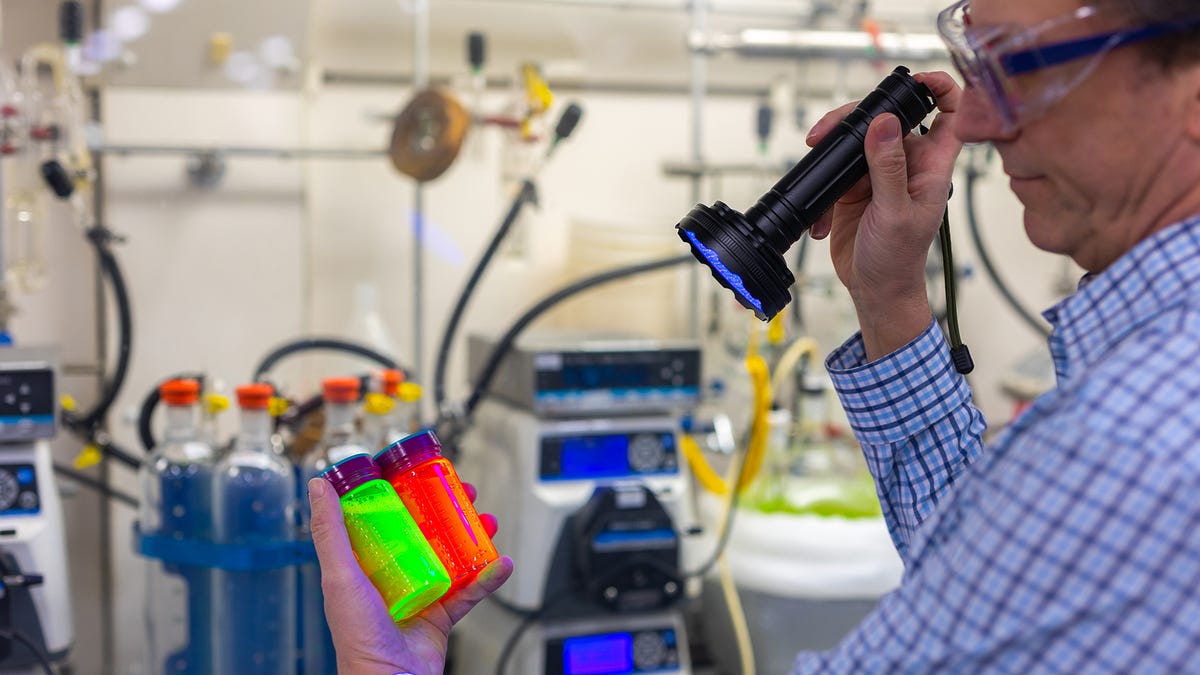
Nanosys president Jason Hartlove shines a UV flashlight on two vials filled with quantum dots.
Geoffrey Morrison/CNET
I wasn’t sure what to expect. I’m fascinated by quantum dots, the microscopic particles that help make your TV brighter and more colorful. And I understand, on a macro scale, how such things exist, but what would I really be able to see in a factory that makes them? What kind of vast cauldrons of science would be bubbling? What fires would be burning? Would there be three scientists double, double toil-and-troubling? I wanted to find out.?
Nanosys is one of the leading manufacturers of quantum dots, and while they’re understandably vague on who their clients are, it’s safe to say you’ve likely seen a TV with their quantum dots. They make billions of the things, which of course isn’t saying much since the dots themselves are so tiny. They aren’t the only manufacturer of quantum dots, but their process is good example of how it’s done.
I headed to their factory/lab in San Jose, California, with the promises of lots of science-y looking things and the aesthetics of a microbrewery. Both these descriptions turned out to be exceptionally accurate. Here’s what I found.
Touring a Quantum Dot Factory
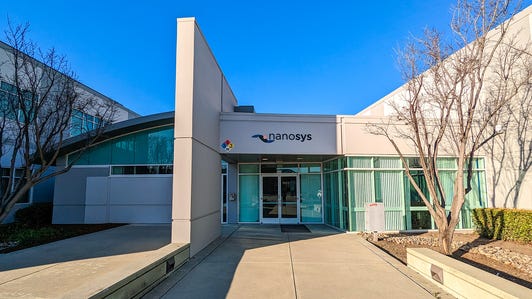

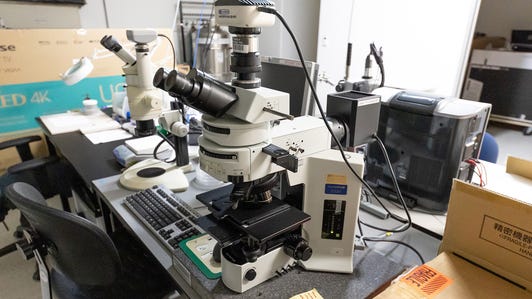
Where dots are… born? Grown? Summoned?
To back up slightly, quantum dots are microscopic particles that glow when supplied with energy. While they have a wide range of uses, the most pertinent one for us here at CNET is as a booster for TV performance. Usually blue LEDs excite green and red quantum dots to allow LED LCDs to perform at a level impossible just a few years ago. Brighter images, deeper colors and so on. More recently, Samsung has started using quantum dots to boost the performance of OLED in the same way. At CES 2023 we got a glimpse at the next generation of display tech: electroluminescent, aka “direct view” quantum dots. These displays, which we’ll likely see in a few years, are just quantum dots. No OLED or LCD tech.
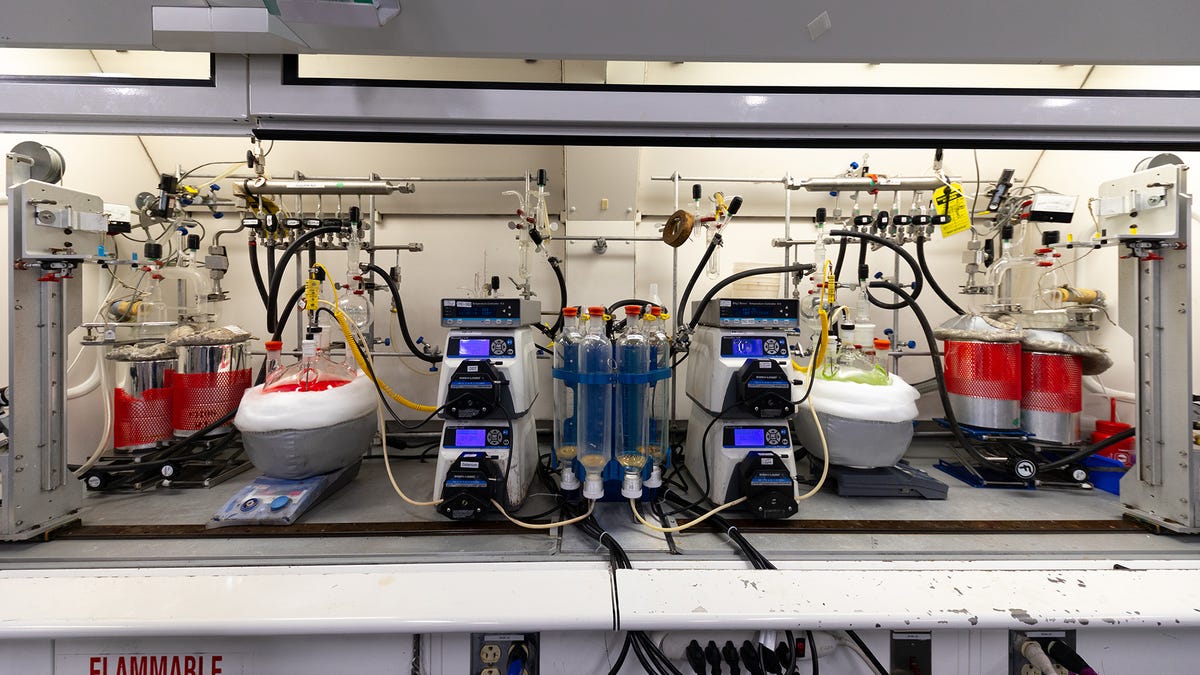
Flasks filled with glowing goo.
Geoffrey Morrison/CNET
So how are all these quantum dots made? That’s what I headed to San Jose to find out. Nanosys’ headquarters is a fairly nondescript building among countless other office park-esque buildings in the city. It doesn’t look like a factory as much as it does a building where you’d find a startup that sells things it can’t describe.?
Inside it’s a lot clearer this place is serious. I was given safety goggles, always a good sign in my line of work, and we headed through the labs. The building isn’t large, but when your trade is microscopic particles it conveniently doesn’t have to be. We passed electron microscopes, integrating spheres, test chambers and more. I especially liked the big, spherical glassware with spinning, glowing liquids inside. I tried not to make a fool of myself while I furiously tried to remember the name of any flask other than Erlenmeyer. I couldn’t, so I kept my mouth shut.?
I had been promised by Jeff Yurek, Nanosys’ vice president of marketing, that the factory would look “kinda like a microbrewery,” and that was spot on. Huge stainless steel vats called reactors mix in and flush out chemicals in precise amounts to build the complex and tiny glowing particles.?
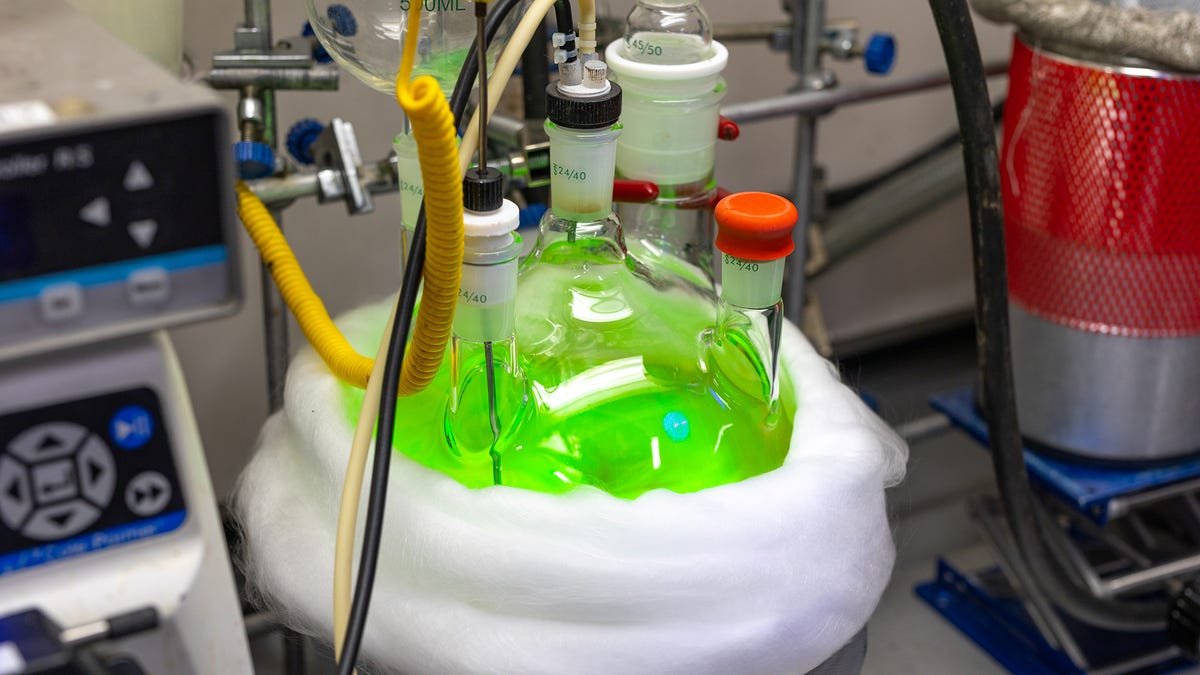
Do not taunt happy fun ball.
Geoffrey Morrison/CNET
The best way I can describe a quantum dot is to imagine a nano-sized?Wiffle ball with a crystal inside. These are built in stages. First, the company grows the nanocrystals. The size of each crystal is crucial, as that’s what determines the color it emits when hit with energy. These crystals are fragile, which is where the Wiffle ball comes in. After the growth of the crystals is stopped, more chemicals are added to cover the crystals in a “shell.” These shells are open just enough to let photons or electrons in, and photons back out again. The specific chemicals, time, and a few other aspects are a closely guarded secret, of course. This is why you’ll see some blurring in the images in the gallery above.
Once the crystals are fully formed and nestled in their comfy shells, they get washed and pumped through a series of pipes, ending up in steel drums ready for shipment to TV manufacturers. Depending on the manufacturer, each drum might last a few months. Each TV only needs a small volume of the quantum dot material. They’re that small and efficient.
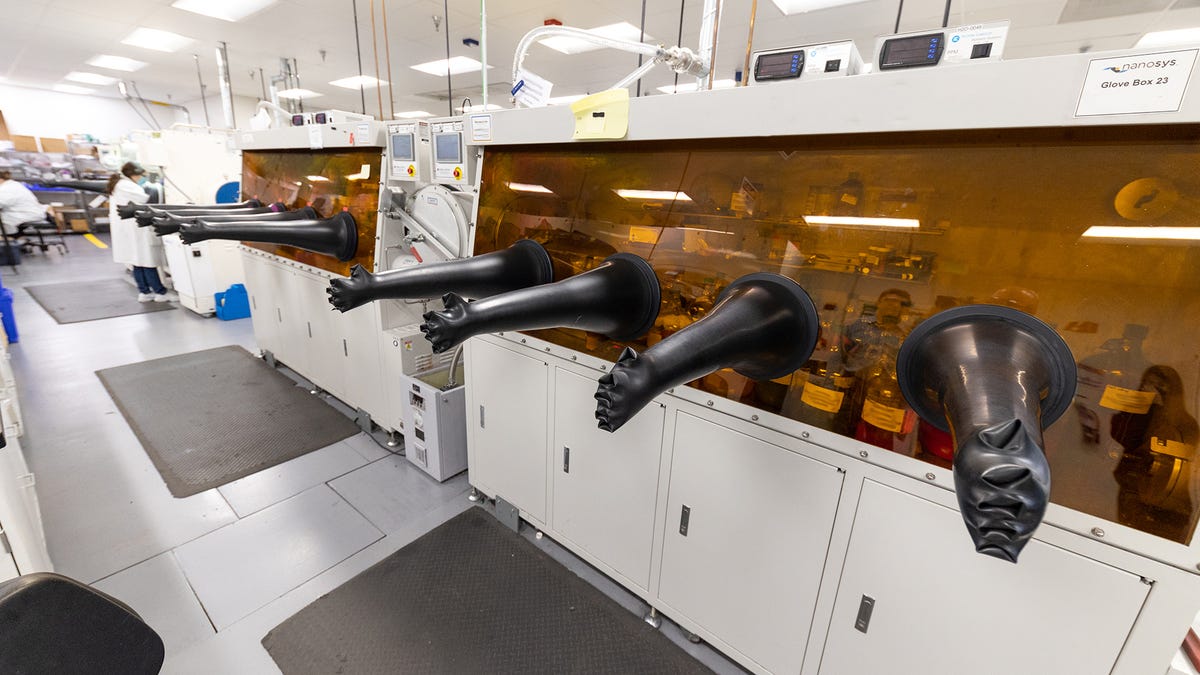
Need a hand?
Geoffrey Morrison/CNET
Our last stop was one of the R&D labs, where they’re working on electroluminescent quantum dots. TVs with QDs up to this point have used photoluminescent quantum dots, which is to stay, they glow a certain color when you hit them with light energy, usually from blue LED or OLED. Electroluminescent quantum dots, what Nanosys is calling NanoLED, use red, green and blue QDs lit by electricity alone. Not only does this have the potential to be the next display tech, it opens up a wide range of display types not possible with other technologies. For more, check out the preview I got at CES 2023: This Top-Secret Prototype Display Will Blow Your Mind.
Related on CNET
- This Top-Secret Prototype Display Will Blow Your Mind
- QD-OLED TV: Samsung, Sony Take on LG With Quantum Dot Special Sauce
- How Quantum Dots Supercharge Farming, Medicine and Solar, Too
- How Quantum Dots Could Challenge OLED for Best TV Picture
The quantum of dots
I understood, on a theoretical level, how quantum dots were made. Most of the info out there explained the chemicals, or showed scientists making small batches, but nothing on a more industrial scale. This tour was eye opening, filling in a gap in my knowledge that had low-key bothered me for a while. After all, how do you make something that’s so tiny, yet complex, in huge amounts? Turns out, not entirely unlike how you make beer. Who knew??
The potential for quantum dots is huge. Not just as a new display tech, but in the medical, agricultural, and other fields as well. Pretty impressive for something so tiny.?
If you’re curious too, or you just want to see cool glowing vials and flasks, check out the gallery above.
As well as covering TV and other display tech, Geoff does photo tours of?cool museums and locations around the world, including?nuclear submarines,?massive aircraft carriers,?medieval castles, epic?10,000-mile road trips, and more. Check out?Tech Treks?for all his tours and adventures.
He wrote a?bestselling sci-fi novel?about city-size submarines and a?sequel. You can follow his adventures on?Instagram?and his?YouTube channel.